The irony of the democratic process in the ‘imperfect’ democracy that is Myanmar, is the military attempting to use the democratic mechanisms to elbow out the modicum of civilian control that exists!
Slowly, but surely, the upcoming elections of 2020 are impacting the conduct of both the Tatmadaw and the civilian polity. October saw the Myanmar edition of the belt and Road Initiative (BRI) seemingly plagued by systemic problems ranging from ethnic strife to environmental degradation. The Kachin government’s Myitkyina Economic Cooperation Zone MoU as part of the BRI reads like a death wish for all, especially for the locals. Violence continues unabated as the Tatmadaw battles on too many fronts to be effective. It continues to bleed embarrassingly in the Rakhine. The Rohingya crisis eludes all, even as Myanmar Government snubs a Chinese suggestion to allow Rohingyas to investigate the situation in Rakhine prior to repatriation.
Elections 2020 and the Democratic Discourse
“Civil-military relations have hit their lowest ebb since 2010, when the previous military government started taking its first tentative steps towards democracy and Suu Kyi was still a political prisoner under house arrest”, writes Bertil Lintner in an article on 30 September 2019 in Asia Times.1 The National League for Democracy (NLD) pronouncements during the celebrations of its 31st Anniversary had set the tone for the build up to the 2020 elections in which the military chief Senior General Min Aung Hlaing has shown interest. Probably projecting himself as a contender to become the President he has been working to portray himself as a moderate leader by visiting and donating at mosques, churches and temples.
Two recent examples of the military using democratic mechanisms to subvert civilian control, as mentioned in the quote at the beginning of this piece, include the controversial bill jointly tabled in the Parliament by the Opposition Union Solidarity and Development Party (USDP) and Tatmadaw MPs to confer powers to the National Defence and Security Council (NDSC) to be able to dissolve the parliament; and the constitutional amendment bill, which proposed that the eligibility rules as applicable for the selection of the President, be applied to state and government ministers as well. 2 Both need to be seen in the run up to 2020 Elections.
With reference to the former, in a briefing on 30th September 2019, the Vice Chair of Tatmadaw’s True News agency Major General Tun Tun Nyi highlighted the need to follow the protocol and to enable the NDSC to meet and address the current political, economic and military affairs of the country. He further explained Senior General Min Aung Hlaing’s efforts to reach out to different faiths in the country were aimed at fostering unity.3 The civilian lawmakers are opposing this due to the apprehension that the Tatmadaw can use the NDSC meeting to highlight the deteriorating security situations in the country to declare a state of emergency and consolidate power for the military. As per the Constitution, the emergency can be declared initially for one year and can be extended twice for six months. This will result in making NDSC the most powerful decision-making body in the country and it will hold power until a new Hluttaw, a new president and a new government is formed. It will de-facto result in a two-year military rule in Myanmar, as NDSC is a Tatmadaw dominated body.
Concurrently, in some townships in Nay Pyi Daw, military lawmakers have started holding their first-ever public meetings with locals. This exercise is being seen as yet another attempt to project Senior General Min Aung Hlaing as a viable and popular candidate for the 2020 Elections.4 NLD lawmakers have questioned these meetings on the grounds that military lawmakers do not represent any constituents as they are appointed by the Military Commander-in-Chief and not democratically elected. Lower House NLD lawmaker U Aung Kyaw Kyaw Oo remarked that, “As they have held public meetings in some townships, this will negatively affect lawmakers from those townships. It is against the ethics of legislators.”
The military is also concerned about Aung San Suu Kyi’s growing reliance on China. As covered in Myanmar Round Up: August 20195, the ties between the NLD and Chinese Communist Party (CPC) are flourishing with regular high-level exchanges between Suu Kyi and Chinese leaders. China’s growing clout in economy and politics in Myanmar is increasingly being seen as a threat to sovereignty, by the military.
The Peace Process
On 28th October 2019, State Counsellor Daw Aung San Suu Kyi announced a three-step plan to reboot the peace process at an event at Nay Pyi Daw, marking the fourth anniversary of the signing of the Nationwide Ceasefire Agreement (NCA) which took place in October, 2015. While the Government had signed the ceasefire agreement with eight groups in 2015, the Tatmadaw is still to sign the agreement.6 The steps announced are as summarised below:-
- To continue holding the 21st Century Panglong Union Peace Conference. This has the following three elements:-
- To involve non-signatories of the NCA in political dialogue.
- To ensure that the people are able to enjoy the fruits of peace.
To develop a framework agreement to guide implementation of the NCA.
To reach an agreement on more points of a future Union Peace Accord.
To develop a plan for continuing the peace process beyond the 2020 Election.
The emphasis will be on reducing violence and broadening involvement in the political dialogue. The NLD Government has agreed, in principle, on power sharing, sharing of revenues earned through taxes and natural resources as well as greater autonomy in the state constitutions. This is diametrically divergent from the Tatmadaw which had suggested that it is better to amend Schedules II (Region or State Legislative List), III (List of Legislation of the Leading Body of Self-Administered Division or Self-Administered Area) and V (Taxes Collected by Region or States)7 of the Constitution rather than push towards changes which ensure “self-determination”.8
The seven-point agreement9 that was reached last month, remains unsigned over differences on signing of the agreement. The Northern Alliance (NA) wants to sign a collective bilateral ceasefire agreement, whereas the Army wants separate agreements. Some developments on this front have been made and, now reportedly, the Myanmar Army has accepted the proposal. The condition of the ceasefire agreement will mean that after the agreement is signed, both sides will have to end the fighting and remain where they are deployed.
Both sides had reached an agreement on seven out of eight points and the only point of difference was over the issue of ceasefire monitoring. NA had proposed that China and the United Wa State Army (UWSA) or the both to be invited and included in the Joint Ceasefire Monitoring Committee (JCMC), whilst the Tatmadaw is averse to this suggestion as China is a foreign power and USWA was not acceptable to them. All these varied problems make the ceasefire and peace building an exacting process. The more the peace process is delayed, the more the suffering of the citizens of Myanmar. 10
Myanmar Belt and Road Initiative (BRI) – Bleak Prospects
David Green, in an article in Nikkei Asian Review on 6th October 2019, 11 writes that a recent decision by the Tatmadaw, not to extend a ceasefire with ethnic armed organizations (EAO) from a nationwide peace agreement puts the country's Belt and Road projects in further limbo. Multiple projects have already been halted, including the key Myitsone dam hydropower project in Kachin state. The Myitsone issue has rallied people of different nationalities and faiths around a consensus against resumption.
The dam ran up against nationwide opposition even as an International Finance Corporation report strongly advised against damming the upper reaches of Myanmar's major rivers. Meanwhile, work on a feasibility study for another project has been suspended as a result of the renewed hostilities. Tatmadaw forces, in late September, assaulted a Myanmar National Democratic Alliance Army (MNDAA) base in Kutkai, squarely in the middle of the proposed route for the China-led Muse-Lashio-Mandalay rail project in northern Shan state. One day after fighting recommenced, a Myanmar Railways spokesman announced the suspension, blaming the instability.
The attacks signal the failure of Chinese attempts to broker peace between Myanmar's vigorously independent military and a group of armed organizations known as the NA. He Baogang, Alfred Deakin Professor and Chair in International Relations at Australia's Deakin University, suggests Beijing might have overestimated its capacity as a mediator in both conflicts. "They thought they could solve the EAO issue behind closed doors in Kengtung, but they have failed to do so," he said. Chinese envoys had been instrumental in convening members of the NA and the military at the most recent round of peace talks in Kengtung, in north Shan state, on 17th September, 2019.
The ongoing conflict also threatens the China-Myanmar Economic Corridor (CMEC), which aims to connect China's southwestern Yunnan Province with Mandalay before branching south to Yangon and southwest to the deep-sea port special economic zone at Kyaukpyu. This summer, the NA highlighted the vulnerability of the economic corridor's main artery by launching attacks along the Muse-Mandalay road, leading to significant damage to bridges and other infrastructure. Annual trade volume at Muse, on the Chinese border, Myanmar's busiest land port, declined 22.9 percent to $4.67 billion in the year till mid-September as a result of the EAO actions, according to Myanmar's Ministry of Commerce.
Meanwhile, the Kyaukpyu development in southern Rakhine state, envisaged as an Indian Ocean trade and logistics hub that would galvanize growth in southwest China, has stalled. "China has not had it all their own way at Kyaukpyu, as evidenced last October, when the scope of the deep-sea port was reduced from $7.2 billion to $1.3 billion on concerns over the scale of Myanmar's national debt to China, environmental issues and land disputes," said Jordan Zele, Country Director for Frontier Myanmar Research in Yangon. Chinese banks also balked at the commitment required to get business off the ground in an area without access to a stable power supply, a dearth of qualified workers and non-existent logistics networks.
The economic corridor is dotted with industrial parks and commercial developments that are dependent on Chinese investment, much of it to come from provincial governments, led by Yunnan. The scope includes three proposed special economic zones along the border, a 10,000-acre Mandalay New Resort City integrated real estate project, the ambitious Yangon New City Project, spearheaded by China Communications Construction Company (CCCC), as well as a fledgling industrial zone in Myotha, outside Mandalay, and another in Myitkyina, in Kachin state.
But Chinese investment in Myanmar is tailing off, going from $1.4 billion in fiscal 2017, to $576 million in the 11 months till August 2019, according to the Directorate of Investment and Company Administration, with the data reflecting a change to the timing of Myanmar's fiscal year implemented this year. China remains Myanmar's second-largest investor, behind Singapore. The mode of investment is fragmented, spread across 123 projects in the past 11 months, as opposed to the multibillion-dollar deals associated with the BRI. Unofficial Chinese investment also continues apace unabated.
Motivated by a need to export surplus construction capacity amid slowing economic growth, a debilitating trade war and the unrest in Hong Kong, China is pressuring the NLD Government to press ahead with the Myitsone dam. The matter is also of face-saving importance at the highest level of the Chinese Communist Party, given Xi Jinping oversaw the signing of an agreement to build Myitsone during a visit as vice president, in 2009. However, the NLD's hands are tied by next year's general election since protecting Myitsone has become an issue of national sovereignty. Experts say that it is hard to imagine the dam coming to pass in its proposed 6,000 MW form, though a scaled down or relocated version may be tabled in the wake of next year's polls.
BRI in the Kachin State – A Recipe for Economic Disaster
Next month, the Kachin State government will sign an agreement on the establishment of a China-backed economic zone, under the CMEC agreement as part of the BRI as per a MOU with Yunnan Tengchong Heng Yong Investment Company (YTHIC) in May 2018, for implementation of the Myitkyina Economic Development Zone. 12 The US$400 million (612.5 billion kyats) project, also known as the Namjim Industrial Zone, is 25 km from Myitkyina, the Kachin capital, and will comprise nearly 5000 buildings and 500 factories spread over approximately 19 sq. km along the historic Ledo Road. Nan Lwin, Senior Reporter of The Irrawady, wrote on 7th October 2019, that the development zone is one of the lesser-known Chinese-backed projects in Kachin State and has received criticism over a lack of transparency, keeping even its own people in the dark. According to the MOU viewed by The Irrawaddy, YTHIC and the state government agreed to:-
- Establish a joint-venture company to implement the zone.
- Government must transfer the land rights within 90 days of the company’s establishment.
- The joint-venture company will obtain a 50-year lease for the land.
- No similar project will be allowed near Myitkyina for 15 years.
- The Chinese company has full authority to invite third-party investors.
- YTHIC would loan the money to pay for feasibility studies and the environmental impact assessment.
- But the joint venture company must repay YTHIC for these expenses.
- Form investment organizations for the zone.
- To secure official permission for the project and apply for tax exemptions.
When The Irrawaddy visited the site in April 2019, landowners said they were concerned about the threat of land confiscations. Land-grabbing is a major issue in Kachin State, especially in Waingmaw Township across the river from Myitkyina, where there is a proliferation of Chinese-operated banana plantations. The Kachin Parliament’s Complaints Committee said it had received 345 complaints since the NLD took office in 2016, including 179 complaints over land seizures. A group of landowners have negotiated over 2.6 sq. km inside the site. Landowners have said that they are yet to receive a reply from the government about compensation.
While economists analyse the terms and conditions, a basic perusal of the MoU terms makes it profusely clear that this project will be going the Hambantota way with the exception that the Kachin elites and the Chinese businesses will be laughing their way to the bank at the expense of the Kachin locals. The deadline for land transfer by 90 days when the locals have not even been engaged, raises suspicion and this could well sow the seeds for a micro-insurgency in the area. This will ensure that the economic zone, even after construction, will remain in a limbo due to violence which was seen along the Muse-Mandalay road in August 2019.
The Rohingyas
Myanmar rebuffs Chinese Suggestion on Rohingya Repatriation
A senior Myanmar foreign ministry official confirmed on 3rd October 2019, that Myanmar has rejected an offer by China to facilitate a visit by a group of Rohingya refugees to its Rakhine state to investigate the situation there ahead of a possible repatriation from temporary camps across the border in Bangladesh. Bangladesh’s Foreign Minister, AK Abdul Momen, confirmed that Myanmar’s government had dismissed the proposal which was originally floated by Li Jiming, the new Chinese ambassador to Bangladesh, during talks with Rohingya refugees in Cox’s Bazar last month, as well as formally discussed during a meeting last week between Myanmar, Chinese and Bangladeshi delegates on the sidelines of the United Nations General Assembly in New York. Aung Ko, the director general of the political affairs department for Myanmar’s Ministry of Foreign Affairs, told RFA’s Myanmar Service his government had never agreed to the offer and is waiting for Bangladesh to “allow” the refugees to return to the border, whereupon they will be accepted, following individual assessments. 13
On the repatriation front, Bangladesh has provided a fresh list of 50,000 Rohingya refugees. With this new list Bangladesh, in total, has provided names of 105,000 Rohingya refugees who are living in Cox Bazar. Bangladesh had earlier provided a list of 55,000 Rohingya refugees for verification over two phases. Both countries have signed a bilateral agreement for the facilitation of the reparation of the Rohingya refugees. The previous two efforts of reparation were complete failures, with not even one refugee agreeing to be repatriated.14
Ecological Impact of the Rohingya Crisis
The ecological impact of the Rohingya crisis has now started to emerge as mentioned in a report by the Ministry of Environment, Forest and Climate Change and Bangladesh quantifying the damage done by the Rohingya settlement in Cox Bazar. It states that the settlement has severely damaged the biodiversity and depleted 8000 acres of forest area. It further states, that 6,164.02 acres of reserved forest have been cut for the settlement of the refugees. This loss is equivalent to over Taka 2420 crores. Last month the administration of the Cox Bazar has restricted all constructions on the land belonging to the forest department.
Trees have also been cut in the forest areas as Rohingyas have not been provided any fuel and they are only dependent on trees for fire wood. The forests in Cox’s Bazar were the natural habitat of the critically endangered Asian elephant. The report said that a 2017 report of the International Union for Conservation of Nature found only 63 Asian elephants living in the forests of Ukhiya, Teknaf, and Ramu upazilas. The report also mentioned that those elephants used to travel to Bandarban or Myanmar through Panerchora-Rajarkul and Balukhali-Ghumdhum corridors. However, the Panerchora-Rajarkul corridor was closed, following the construction of a cantonment in Ramu. After the Rohingya influx and subsequent construction of their shanties, the Balukhali-Ghumdhum corridor got closed too, according to the report. As a result, incidents of elephant-human conflict increased, resulting in the deaths of at least 12 Rohingyas. 15
Technology and the Rohingyas
The Rohingya penchant for technology is well documented. The mobile phone was their main tool to stay connected. To curb the crimes being committed using mobiles and for law and order security, the Bangladesh Government had stopped internet services to the Rohingyas in September 2019. 16 However it has now emerged that the Rohingyas have managed to bypass the ban by using illegal SIM of Myanmar state telecom. Myanmar Posts and Telecommunications, also known as MTP, has been entering Bangladesh illegally. These SIMs are used widely in the refugee camps of Ukhiya and Teknaf in the Cox Bazar area. The MTP SIM is popular as it provides free minutes and free internet bundles. MTP has gained more popularity after Bangladesh Telecommunication Regulatory Commission (BTRC) banned its 3G and 4G internet services in the camps. This has created a serious security concern for Bangladesh as authorities banned the BTRC internet networks citing security reasons. 17
The Security Situation
The Bangladesh special police conducted a raid on a beach in the Cox Bazar district and seized a Rohingya man with drugs worth US$ 5 million. The police seized 800,000 methamphetamine pills, also known as yaba, which is popular among the youth of Bangladesh. The drug has become a growing problem in the refugee camps in Cox Bazar and this seizure is the biggest one in 2019. Till date 500 suspected drug traffickers including 25 Rohingyas have been shot dead by the police and security forces. 18
Due to the arrival of the Rohingyas in Bangladesh, majority of Buddhist residents of Chattogram and Cox Bazar are living in constant state of fear due to the 2012 attacks on 29 Buddhist temples in the Ramu area, which were damaged. The Buddhists of the area believe that these attacks were carried out by the Rohingya Muslims who infiltrated across the border from Myanmar. There have been reports of Rohingyas coming out of camps and creating problems for the local Buddhists although the Bangladesh Government has been alert about these incidents. The temples of the areas are under state protection though the fear still runs among the Buddhists. 19
United Nations’ Approach
The UN approach to the Rohingya crisis has been myopic and divorced from environmental realities. A comprehensive study of the UN efforts in Myanmar has been conducted by the Vivekananda International Foundation (VIF) and published as a VIF Paper entitled ‘Counterproductive Effects of Sanctions – The Myanmar Case Study’. 20
In Dhaka, on 9th October 2019, while speaking at the Diplomatic Correspondents Association, Bangladesh (DCAB) Talk, UN chief in Bangladesh Mia Seppo lamented a “collective failure” of the world, to influence Myanmar in resolving the ongoing Rohingya crisis. She added that it is a challenge that the world is grappling with and no one knows the solution to it. She further stated that the root cause of the problem lies in Myanmar and the challenges are complex with many aspects of the crisis being inter-related. 21
Myanmar has urged the United Nations to spend more on the reparation of the Rohingya refugees than spending on the investigations on Myanmar. In a statement, Daw Hmway Hmway Khyne, Myanmar’s Deputy Permanent Representative to the UN said that these investigations are been conducted without the cooperation of the Government and will not bear much results. According to her, the UN has spent $35 million on seven bodies, which are investigating Myanmar. 22 On the same lines Gambia announced its decision in the UNGA meeting to file a case in the International Court Justice (ICJ) against Myanmar for the human rights violations against the Rohingyas. This will be the first time that Myanmar authorities will be formally accused of the crime of genocide. 23
India
On a recent visit of PM Sheikh Hasina from 3-6 October 2019, India has assured Bangladesh that it will help Bangladesh in facilitating the safe return of Rohingya refugees. India also promised to provide humanitarian aid to Bangladesh for the refugees.24 India till date has given a total aid of 120 crores rupees to Bangladesh for the displaced Rohingyas. In the meeting India conveyed to Bangladesh that reparation of Rohingyas to Myanmar should be undertaken as it is not sustainable to keep Rohingyas in Cox Bazar refugee camps. 25
Violence Unabated
On 9th October 2019, Ta’ang National Liberation Army (TNLA) attacked a military convoy in Shan state killing three soldiers and seven civilians. The TNLA has been constantly attacking the military and violating the unilateral truce called by the Brotherhood Alliance till the end of this year to have peace negotiations. 26
The TNLA reported that it has clashed with government forces more than 130 times from January to September. The clashes happened in Kutkai, Kyaukme, Namhsan, Mangton, Namtu, Lashio, Namkham and Muse townships. The highest number of clashes happened in Kutkai. 27 The NA which comprises of TNLA, Arakan Army (AA) and MNDAA had jointly declared a unilateral ceasefire with Tatmadaw between 9th September to 31st December 2019. This was done to reduce tensions and clashes with the army and reach a bilateral agreement with Government. While there has been a decline in terms of number of clashes between the NA and Tatmadaw post the ceasefire, the clashes have occurred nevertheless. However the clashes between Myanmar Army and the AA have continued in Rakhine and Chin state.
The AA has accused the 22nd Tatmadaw troop of the Myanmar military of burning houses in the Buthidaung Township on 2nd and 3rd October 2019. The township administration confirmed destruction of two houses in Kun Taung village. However, U Aung Thaung, a member of the Pyithu Hlutaw, said that he saw Tatmadaw soldiers light fires in the Kun Tuang village. Meanwhile, a proposal urging the Arakan State government to stop both sides from engaging in violence, while “using religious and residential places as cover” was submitted to the State Hluttaw and was approved on 23rd September 2019. 28
On 5th October 2019, the AA army attacked the Tatmadaw and police on Saitinchaung bridge in Rakhine state. A 40-mm bomb launcher was also fired at the security camp. The bridge has been previously attacked five times in the past. 29 Khaing Thukha, spokesperson of the AA stated on 8th October, that since the Tatmadaw had equipped its armed forces with more weapons and ammunition, armed conflicts were likely to intensify.30 A Tatmadaw column reportedly captured a temporary camp of the AA at Kyauk Pon Taung, North of Yoe Ta Yoke Village, Ponnagyun Township, Arakan State at about 2 p.m. on 18th October, Col Win Zaw Oo told reporters. He reported that food and landmines were recovered from the site and while no Tatmadaw members were killed or injured in the clash, some fighters from AA were hurt. 31
In a most serious encounter, Myanmar’s military staged a dramatic helicopter attack on AA motorboats and rescued 58 passengers abducted from a large passenger boat in strife-torn Rakhine state over the weekend, freeing 14 passengers, government and army spokesmen said. The incident started on Oct. 26, when AA fighters fired guns to stop a passenger boat called the Shwe Nadi as it made its way from the Rakhine state capital Sittwe to Buthidaung in the north, forcing it to dock on the banks of the Mayu River. The AA fighters then offloaded 58 passengers into three motorboats, leaving some civilians, women and elderly passengers on the boat, which was allowed to proceed upriver while to motorboats sped away on Yay Poke Creek.
The AA version of the incident was that its fighters, working on information that military personnel disguised as the civilians were on the Shwe Nadi, stopped the passenger boat for inspections and apprehended those they thought were army personnel in order to take them away by motorboat. Around mid-day, three military helicopters flew over and started firing rockets and ‘machine guns’ indiscriminately, killing some AA fighters and detainees, sinking two motorboats and damaging the third motorboat while the detainees ran away. The three military helicopters continued firing at the surrounding area for more than five hours, killing more AA members and detainees. The AA said it was unable to confirm the number of deaths and it blamed the military for killing the detainees with indiscriminate gunfire. “We never commit indiscriminate killing of our detainees,” AA spokesman Khine Thukha told RFA’s Myanmar Service.32

Conclusion
The Tatmadaw needs to realistically assess its strengths and weaknesses and then apply itself to combat. In doing so, it also has to understand the power of the EAOs. The deficit in power has to be compensated by negotiation, politics and diplomacy. Currently what is seen is the major deficit of military leadership. Only once it gets it act together can it hope to assert itself meaningfully for the benefit of the nation and itself. Though democracy in Myanmar is often described as imperfect, the sentiments of the people are seen reflected in the way the Tatmadaw is being held at bay. The scale of violence against the AA has hit a new high with riverine warfare emerging as an important factor. The Kachin Myitkyina Economic Cooperation Zone MoU reveals the pitfalls of a poorly negotiated deal with Chinese and is an ominous harbinger of doom. The coming months promise to be hectic.
End Notes:
- https://www.asiatimes.com/2019/09/article/suu-kyi-and-the-generals-drift-apart-in-myanmar/
- For a detailed report on both these bills, see https://www.vifindia.org/article/2019/october/18/myanmar-round-up-september-2019.
- https://www.mmtimes.com/news/military-seeks-national-defence-and-security-council-meeting.html
- https://www.irrawaddy.com/news/burma/nld-myanmar-military-mps-meetings-public-unethical-poll-tactic.html
- https://www.vifindia.org/article/2019/september/10/myanmar-round-up-august-2019
- https://www.frontiermyanmar.net/en/govt-announces-three-steps-to-advance-peace-process
- http://www.burmalibrary.org/docs5/Myanmar_Constitution-2008-en.pdf
- https://www.irrawaddy.com/news/burma/myanmar-militarys-promises-charter-change-fail-impress-ethnic-mps.html
- The seven points they agreed on are: 1) to discuss ceasing armed conflict and signing a bilateral ceasefire agreement; 2) to tackle the internally displaced persons (IDPs) issue; 3) to set ceasefire rules; 4) to establish communication offices to avoid further clashes; 5) to avoid making arrests on both sides to build mutual trust; 6) to discuss the Nationwide Ceasefire Agreement (NCA) process; and 7) to discuss establishing a mechanism for conflict resolution.
- https://www.irrawaddy.com/opinion/guest-column/myanmars-peace-process-puzzling-phenomenon.html
- https://asia.nikkei.com/Spotlight/Belt-and-Road/Renewed-conflict-in-Myanmar-slows-China-s-Belt-and-Road-projects
- https://www.irrawaddy.com/news/burma/deal-signed-bri-related-economic-zone-myanmars-kachin-state.html
- https://www.rfa.org/english/news/myanmar/rejection-10032019164024.html
- https://www.aa.com.tr/en/asia-pacific/bangladesh-gives-myanmar-new-list-of-rohingya-refugees/1615103
- https://newsinfo.inquirer.net/1179206/rohingya-settlements-8000-acres-of-forests-razed
- https://www.reuters.com/article/us-bangladesh-rohingya/bangladesh-blocks-internet-services-in-rohingya-refugee-camps-idUSKCN1VO1WQ
- https://www.dhakatribune.com/bangladesh/rohingya-crisis/2019/10/17/rohingyas-bypass-govt-s-ban-on-mobile-services-with-mpt-sim
- https://www.newindianexpress.com/world/2019/oct/28/bangladesh-police-arrest-rohingya-man-with-drugs-worth-usd-5-million-2053856.html
- https://www.indepthnews.net/index.php/the-world/asia-pacific/3041-bangladesh-buddhists-live-in-the-shadows-of-rohingya-fear
- https://www.vifindia.org/paper/2019/october/28/counterproductive-effects-of-sanctions-the-myanmar-case-study
- https://bdnews24.com/rohingya/2019/10/09/un-says-rohingya-crisis-down-to-collective-failure-to-influence-myanmar
- https://www.mmtimes.com/news/un-urged-spend-more-repatriation-less-probes.html
- https://www.dhakatribune.com/bangladesh/rohingya-crisis/2019/10/20/gambia-set-to-sue-myanmar-in-the-icj-for-rohingya-genocide
- https://www.weeklyblitz.net/news/india-to-stand-by-bangladesh-in-resolving-the-rohingya-crisis/
- https://www.aninews.in/news/world/asia/spent-rs-120-cr-on-rohingyas-but-displaced-cant-live-for-protracted-period-india-tells-bangladesh20191005171432/
- https://www.rfa.org/english/news/myanmar/three-myanmar-soldiers-die-10092019165116.html
- https://www.bnionline.net/en/news/tnla-reports-130-clashes-burma-army-year
- https://www.bnionline.net/en/news/aa-and-locals-accuse-tatmadaw-soldiers-torching-homes-buthidaung-township
- https://elevenmyanmar.com/news/aa-fires-40-mm-launcher-at-police-and-tatmadaw-on-saitinchaung-bridge-on-buthidaung-yathetaung
- https://www.bnionline.net/en/news/arsenals-increase-so-does-fighting
- https://www.bnionline.net/en/news/tatmadaw-allegedly-seizes-aas-temporary-camp-ponnagyun-township
- https://www.rfa.org/english/news/myanmar/military-rescue-10282019173126.html
(The paper is the author’s individual scholastic articulation. The author certifies that the article/paper is original in content, unpublished and it has not been submitted for publication/web upload elsewhere, and that the facts and figures quoted are duly referenced, as needed, and are believed to be correct). (The paper does not necessarily represent the organisational stance... More >>
Image Source: https://kabamakyei.wordpress.com/2014/01/24/90/

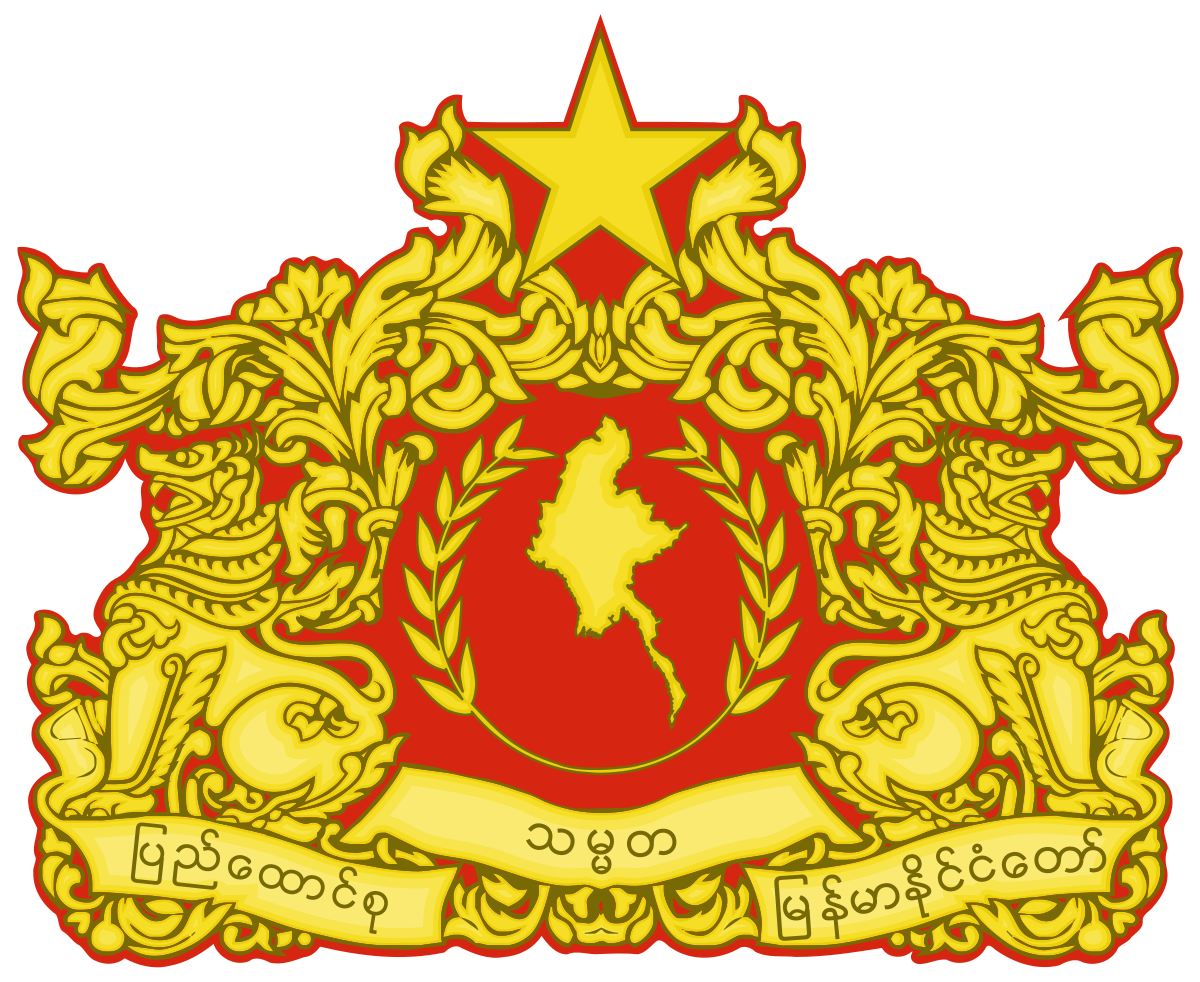



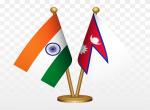
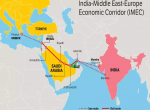
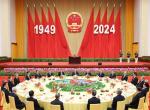



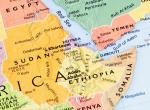

Post new comment